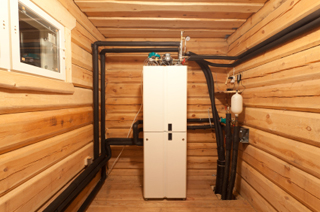A geothermal system is one which uses the constant temperatures below the surface of the earth to cool and heat homes over the long term very economically. It is an environmentally friendly and very inexpensive method for cooling and heating in new housing if your property is a good candidate for it. You can fit older houses with these systems as well, although it can be more of a challenge in older homes.
If you are interested in doing a geothermal installation in your own home, you should first determine if a vertical or horizontal geothermal will be right for you by doing a site evaluation. Having a qualified geothermal technician walk through at this stage of the project to see how much land is available for installation of pipe, what the soil composition is, how deep the bedrock is and what nearby water sources are available. If you live in an area that gets cold, you will need to consider winter temperatures as well, since vertical geothermal is better when the ground will likely freeze.
Your current cooling and heating system needs to be evaluated as well so you know what changes need to be made to accommodate the
geothermal fittings. Steam and other forms of radiant energy generally need to be totally replaced or used as a preheating mechanism for standard cooling and heating which will reduce your savings significantly.
Figure out what geothermal supplies you will need, depending on whether you are using an open loop or a closed loop geothermal system. No fluid leaves or enters in a closed loop system since they are totally sealed. However, an open loop system needs a fresh water source from which it transfers from one spot another.
Depending on the local geology, ditches need to be dug 7-15 feet deep for a horizontal closed-loop system. Then the heat exchange PVC piping is laid into the ditches. For a closed vertical system you’ll need to dig holes that are 150 to 300 feet in depth. Then install hairpin geothermal pipe that is rated for your system. Around 1000 to 1500 feet of pipes are needed to cool or heat an average home adequately. For a slinky coil closed system, a wide trench needs to be dug where you will install looping pipes. A pond loop geothermal systems needs a trench dug to the local body of water and then loop coils installed on the bottom of the pond. The pond has to be at least ¼ acre in size.
So expect to do a lot of digging! Successful geothermal installations require good planning, quality materials, and a team of qualified people to help. Check out PVC Plus Drillings
quality supplies.
